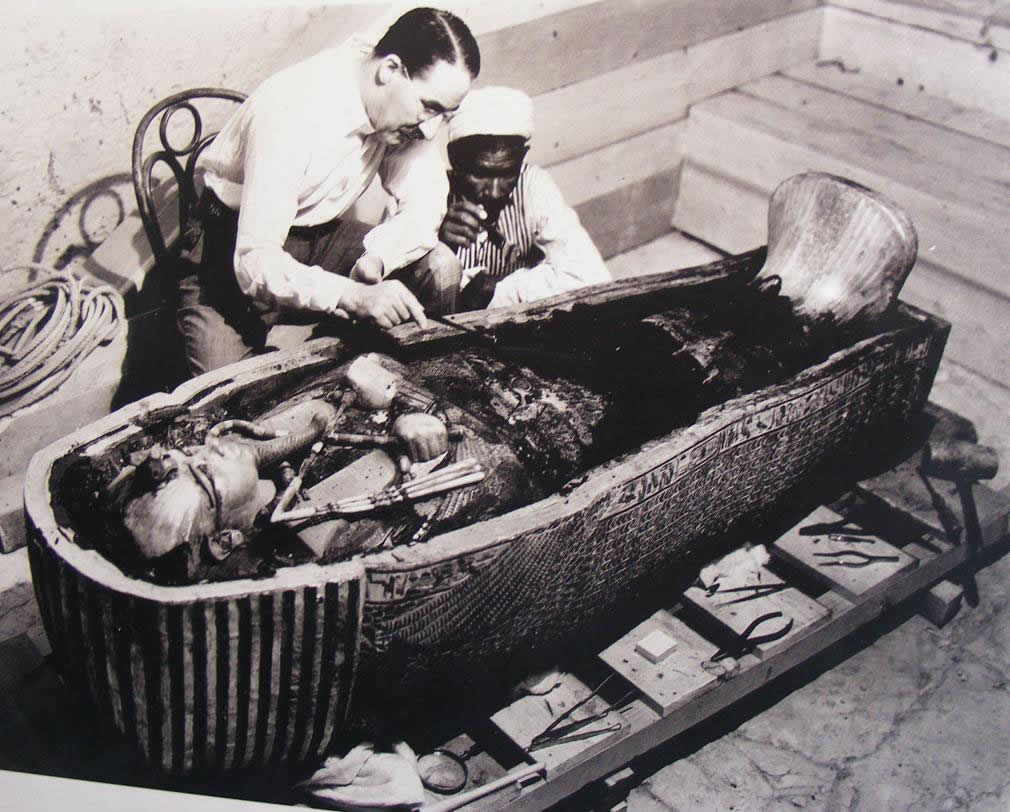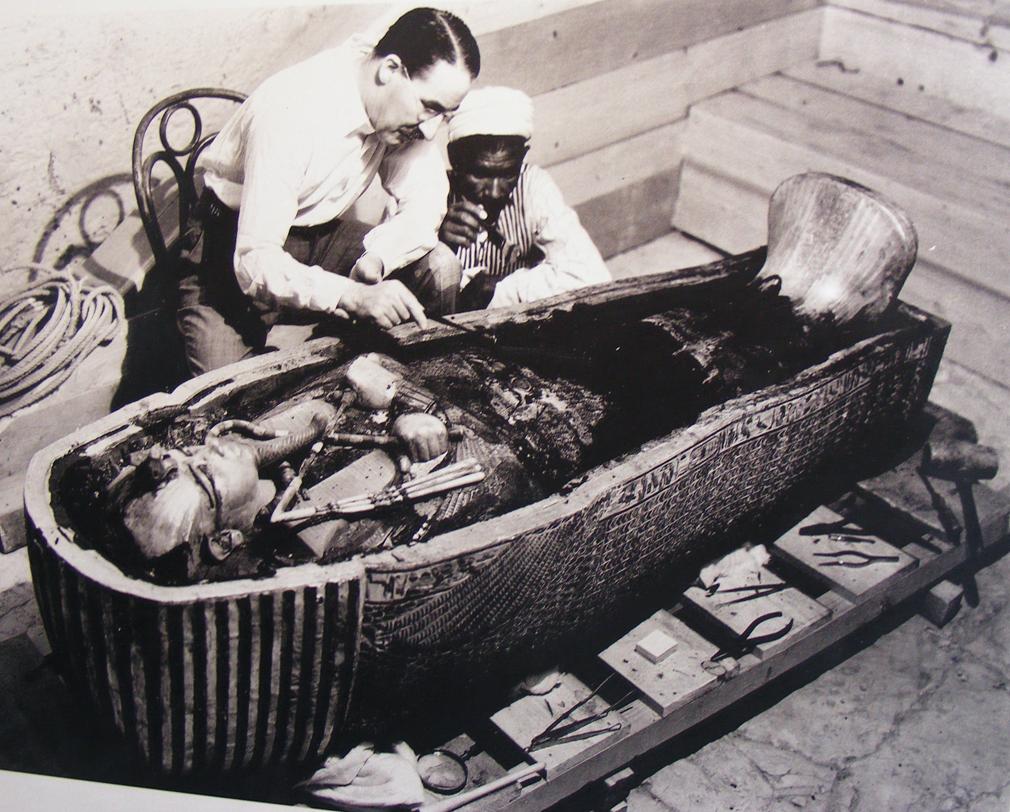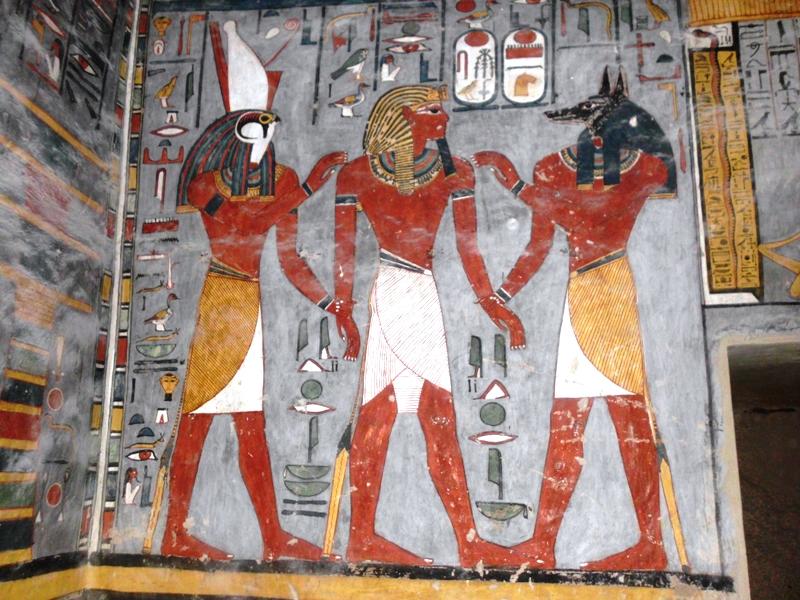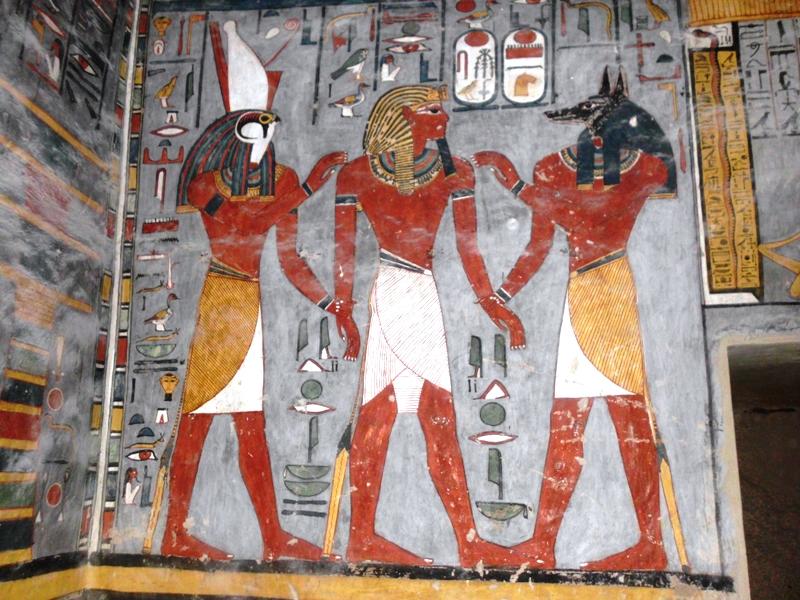|
|

| |
| |
The pyramids of Chephren
|
| |
King Chephren had his pyramids built in Giza at a
diagonal angle to the building erected by Cheops.
Because it is on a higher site it looks larger, but with
a higher of 470 ft (143.5 m) it is in fact rather
smaller than the pyramid of Cheops.
The limestone facing of the complexes, which have lower
courses of red granite, is well preserved, particularly
at the top; architecturally the equal of its great
predecessor, its internal layout is entirely different
but very simple.
Two entrances, dating from different phases of the
building, lead to two down-word-sloping passages, which
finally unite in a single main entrance running
horizontally into the burial chamber.
The chamber itself measures 46x16 ½ ft (14.1 x 5 m), and
has a gabled roof. In modern times, the first man to
enter it was the Italian adventurer Giovanni Belzoni in
March 1818 (wall inscription of the burial chamber). He
found the king’s empty granite sarcophagus let into the
floor.
The small amount of space used inside the pyramid, by
comparison with the pyramid of Cheops, led to
speculation that there were further chambers inside, but
radiological investigation produced no results.
|
| |
| |
The Mortuary temple of
Chephren |
|
| |
Although the
characteristics ensemble of the religious sites
associated with pyramids appeared as early as the time
of Snefru, comprising a valley temple, a causeway and a
mortuary (pyramid) temple, the fully developed design
does not appear until the time of the Giza complexes.
However, an individual plan for the separate buildings
was devised for every Fourth – Dynasty- ruler.
Only from the Fifth Dynasty onward was the plan for the
buildings and the spatial program more extensively
standardized, and it remained obligatory until the end
of the Old Kingdom.
The core walls of the pyramid temple of Chephren (361 x
183 ½ ft; 111x 56 m) still emerge from the rock,
stripped of their former facing of granite and limestone
blocks, so that the (supposed) depictions on the walls
are also lost. The large courtyard complex where twelve
colossal figures of the king once stood in front of
pillars can easily be made out. At the back of the
courtyard, five deep sanctuary rooms for Chephren’s cult
barques lie side by side.
|
 
|
| |
| |
| |
The Valley temple of Chephren |
|
| |
With the great sphinx,
The Valley temple of Chephren (147 x 147 ft; 45 x 45 m)
is the best preserved sacred building of the Old
Kingdom. The immensely heavy granite blocks facing the
walls are particularly impressive for the smooth
technique whereby they fit together.
Two symmetrical gateways lead from the eastern façade to
the entrance chambers, each of which has a tall niche
providing access to a transept. From here a passage
leads to the central part of the building, the T –
shaped pillared hall. 16 monolithic granite pillars with
mighty architraves once supported the ceiling of the
hall. The floor was paved with calcite slabs, and 23
cult image of Chephren (made of gneiss, basalt and
calcite) originally stood along the walls.
Traces left in the paving indicate their sites. One of
them was the famous seated figure of the “Falcon
Chephren” found in 1860 by A. Mariette dumped in a shaft
in the vestibule with other status of the king. The
French excavator was completely stunned: “one of them
might be thought to have come from the hand of the
sculptor only yesterday.”
|
 
|
| |
| |
|
|
|
|
|
|
|